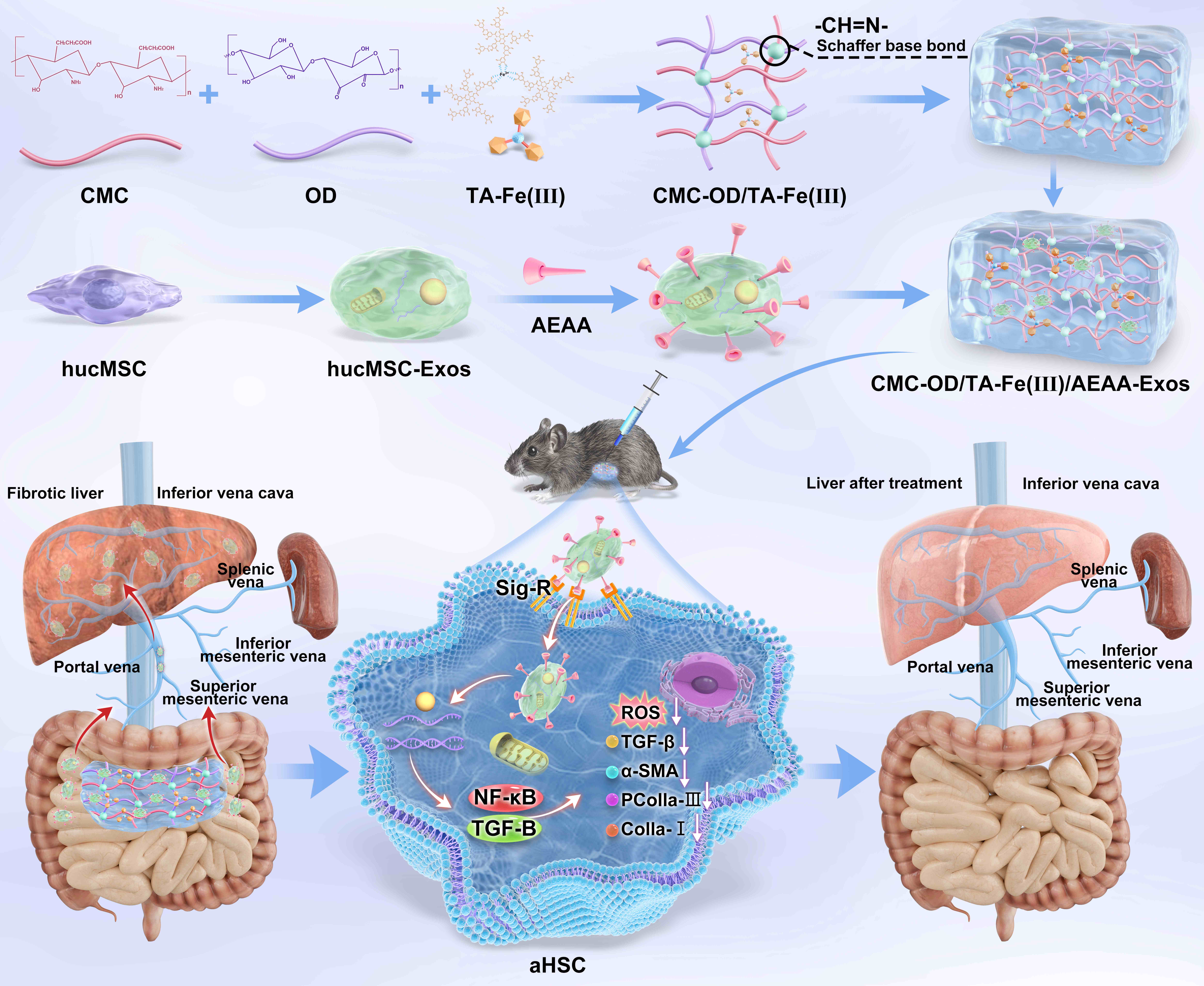
Hydrogel loaded with AEAA-modified exosomes attenuate hepatic fibrosis by targeting activated hepatic stellate cells
Zongbin Sun1, Jia Yao2, Qiuxia Zheng1, Yue Zhang1, Xun Li1,2.
1First Clinical Medical College, Lanzhou University, Lanzhou, People's Republic of China; 2First Hospital of Lanzhou University, Lanzhou University, Lanzhou, People's Republic of China
Lanzhou University. Key Laboratory of Biotherapy and Regenerative Medicine.
Chronic hepatic injury induced by non-alcoholic steatohepatitis, alcoholic steatohepatitis (ASH) and viral hepatitis triggers pathological pathological activation of hepatic stellate cells (HSCs), leading to the excessive secretion of extracellular matrix proteins and subsequent fibrogenesis. Stem cell-based regenerative research has highlighted the therapeutic potential of human umbilical cord mesenchymal stem cell-derived exosomes (hucMSC-Exos) for hepatic tissue regeneration and repair. However, exosomes undergo rapid clearance by the reticuloendothelial system (RES) following systemic administration, limiting their therapeutic potential due to insufficient in vivo retention and sustained release. This study engineered an innovative hydrogel-mediated delivery platform encapsulating aminoethyl anisamide (AEAA)-functionalized exosomes to target activated hepatic stellate cells (aHSCs) to mitigate hepatic fibrosis. By synthesizing a hydrogel (CMC-OD/TA-Fe(III), Gel) composed of carboxymethyl chitosan, oxidized dextran, and iron tannate, and then encapsulating umbilical cord mesenchymal stem cell-derived exosomes functionalized by AEAA (AEAA-Exos), we implanted this Gel/AEAA-Exos into mice with hepatic fibrosis by intraperitoneal injection to evaluate the therapeutic effect of the hydrogel. The results show that the hydrogel CMC-OD/TA-Fe(III) has favorable physical properties, optimal biocompatibility, and sustained-release profile. And Gel/AEAA-Exos system significantly reduced oxidative stress and alleviated hepatic fibrosis compared to non-vectorized exosome delivery systems. Moreover, RNA-seq also revealed that the Gel/AEAA-Exos system ameliorates hepatic fibrogenesis mainly by modulating oxidative stress, collagen deposition, and inflammatory cascade in liver tissues. The hydrogel/exosome delivery platform may represent a new healthy, safe, and efficient strategy for the treatment and prevention of hepatic fibrosis and even hepatic cirrhosis. This work also suggests the application potential of the Gel/AEAA-Exos delivery system for chronic liver injury and end-stage liver disease.

This work was supported by the National Natural Science Foundation of China regional project (82060119), Gansu Provincial General Surgery Clinical Medical Research Center (20JR10FA661). Gansu Province Traditional Chinese Medicine Industry Innovation Consortium Project (22ZD6FA021-4) and the Gansu Province Science and Technology Plan Project (23YFFA0034). International cooperation field of major scientific and technological projects (23ZDWA003) -- China and Germany jointly develop a new generation of stem cell therapy technology for hepatic fibrosis/cirrhosis. Gansu Province Graduate Innovation Funding Project (2025CXZX-019)..
[1] hydrogel
[2] AEAA-engineered exosomes
[3] sustained release
[4] target
[5] anti-hepatic fibrosis